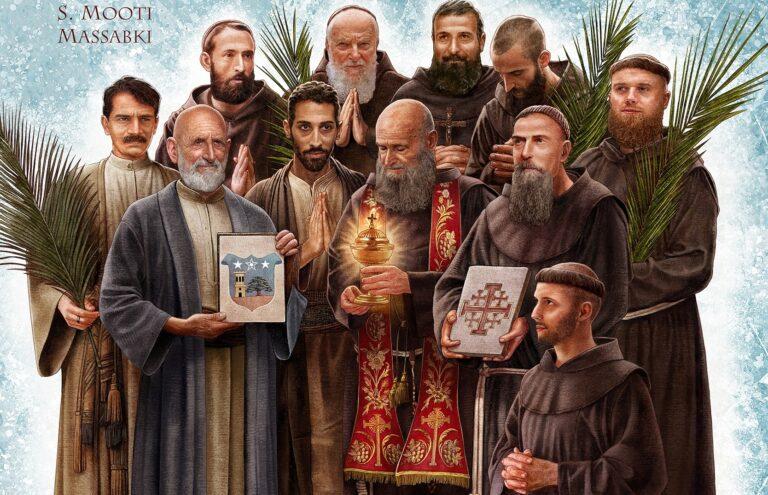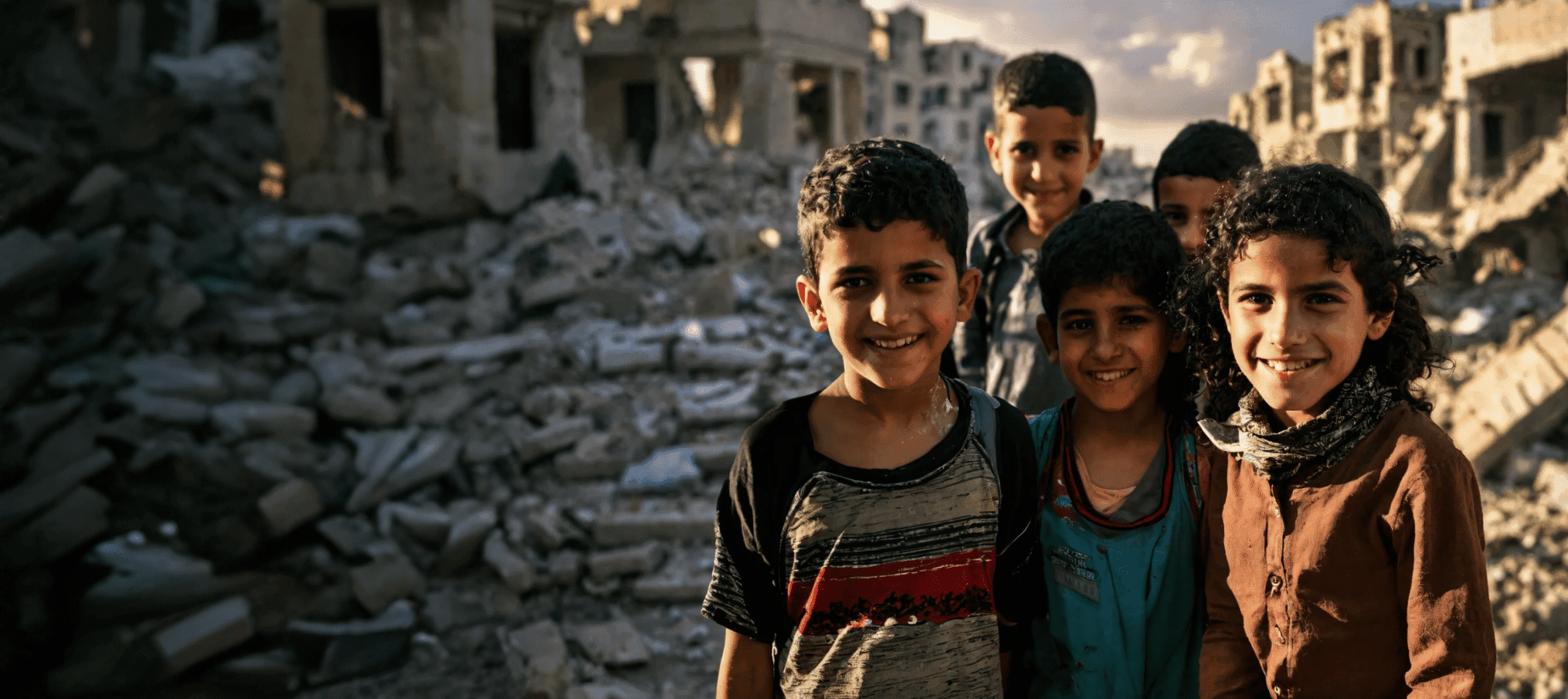On Sunday, October 20, 2024, Pope Francis will celebrate the canonization in Rome of the eleven martyrs of Damascus: eight friars of the Custody of the Holy Land and three Maronite laymen, executed for their faith in 1860. This event represents not only the recognition of their sacrifice but also a strong message of peace and dialogue for the Middle East.
On the night of July 9-10, 1860, a Druze militia stormed the Franciscan convent of Bab-Touma (Gate of St. Thomas) in Damascus. Although the friars sought refuge in the church, they were captured and subjected to cruel torture to force them to renounce their faith. None of them recanted, and in the end, the eight religious men and three Maronite laymen were beheaded, and their bodies were burned.
Canonization of the Martyrs of Damascus in Rome
On October 10, 1926, Pope Pius X beatified them, recognizing their sacrifice, and this Sunday, Pope Francis will proclaim the Martyrs of Damascus as saints, acknowledging the increase in their reputation for martyrdom and the many signs attributed to their intercession.
The canonization of the martyrs of Damascus is seen as an opportunity to send a strong message of dialogue, peace, and unity, particularly for the Middle East, a region increasingly affected by conflict and tension.
But how can the memory of such a violent death, caused by religious motives, become a message of dialogue and peace? Why does this event still speak to us today? Before answering, it is necessary to understand who these people were and the historical context in which the events took place.
Historical Context of the Martyrdom in Damascus: The Persecutions of 1850, 1856, and 1860
The martyrdom of the Franciscans in Damascus was not an isolated incident but occurred within a context of Christian persecution between 1850 and 1860 in various parts of the Middle East under the Ottoman Empire. Violent clashes broke out between the Druze (a Muslim religious community) and Christians, especially Maronite Christians, leading to violence and killings.
The most significant incidents occurred in Aleppo, Syria, in 1850, in Nablus, Palestine, in 1856, and in 1860 in the Mount Lebanon region, where about 20,000 Maronite Christians were massacred, with violence later spreading to Damascus. The tensions had political, economic, and religious roots and were exacerbated by the weakness of the Ottoman government, which struggled to maintain order in an increasingly fragmented empire.
In fact, the desire for mission among the Blessed Manuel Ruiz and seven Companions of the Order of Friars Minor arose, as we will see, from entirely different reasons, the same ones for which they died.

Who Were the Martyrs of Damascus?
The Martyrs of Damascus were eleven men, eight of whom were Franciscan friars from the Custody of the Holy Land in Syria, and three were Maronite laymen who had offered protection to the fathers. These laymen were brothers: Francis (a merchant), Mooti (a teacher at the Franciscan school), and Raphael Massabki, originally from Damascus.
The friars, on the other hand, were missionaries from Europe; one from Austria, Fra Engelbert Kolland, and the other seven from various parts of Spain: Fra Manuel Ruiz López, Fra Carmelo Bolta Bañuls, Fra Nicanor Ascanio Soria, Fra Nicolás María Alberca Torres, Fra Pedro Nolasco Soler Méndez, Fra Francisco Pinazo Peñalver, and Fra Juan Jacob Fernández.
All of them belonged to the Custody of the Holy Land, a province established by St. Francis according to a precept found in his Regula non bullata, which invited Franciscan missionaries to be "subject to every human creature for the love of God." This dedication and openness, born from a well-known and beloved truth, led the Franciscans to create works of charity and services to benefit all, Christians and non-Christians alike. For instance, the first schools in Syria and other parts of the Middle East were founded by Franciscan missionaries.
The Message of Martyrdom: Dying for the Truth Is Not Madness
This leads us to the reason why this event becomes a message of peace, dialogue, and unity. As we have seen, the reasons for these religious conflicts, which led to internal struggles and bloody persecutions, were manifold. Therefore, when the torturers demanded that the friars and the three laymen convert in exchange for their freedom, they might have had many motives beyond the purely religious.
According to testimonies and sources, the firm refusal of the Martyrs of Damascus to convert was meant to affirm one single truth, that of their belonging and love for God—a belonging to a truth that had led them to love others more and meet them in their fullness of goodness, beauty, and wholeness, even to the point of sharing their sufferings.
Thus, renouncing God would have meant denying this truth, which is the only way men and women can truly meet. Therefore, the courageous choice of martyrdom is not just an act of heroism or madness, but an act of love for the truth of humanity.
Emir Abdelkader al-Jazairi, Defender of Christians
We were struck by the fact that, in researching that historical period, we find a similar stance, expressed according to other parameters and values, in another contemporary figure to the Martyrs of Damascus: Emir Abdelkader al-Jazairi. After spending much of his life fighting the French invasion of Algeria, he was taken as a prisoner to France and later exiled to Damascus, where he arrived in 1855.

Here, he became a respected figure for his wisdom and spirituality. Despite this, in 1860, he did not hesitate to risk his respectability, his life, and the lives of his family to offer protection to the Christians of Damascus. He sheltered hundreds of Christians in his palace and used his authority to stop the violence, for which he was even praised by Pope Pius IX.
The reasons for his actions can be found in some of his public speeches. "We are obliged," he said, "by the command of God and our prophet Muhammad, to protect Christians and treat them with respect. Whoever mistreats them, mistreats our religion."
The messages of the Martyrs of Damascus and that of the Emir are not exactly the same; of course, there are differences worth exploring, and it would be naive to say they are identical. But these two courageous acts suggest a hypothesis that remains true even today amid the darkness of violence engulfing the Holy Land: we must begin with the other in their entirety, without focusing on our own pain or the terrible actions scattered throughout the history of the peoples of the Middle East.


















